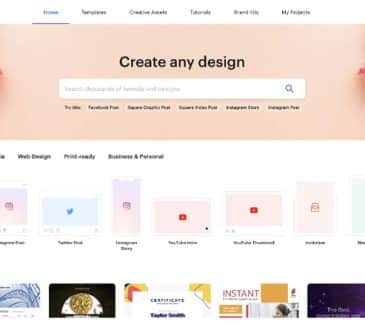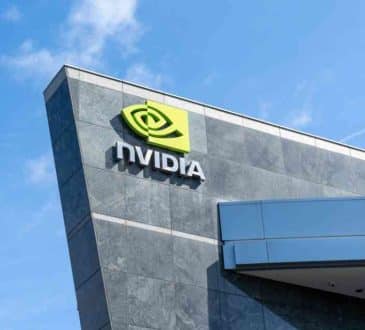Digital Footprint Defense: How Brands Utilize Proxies to Monitor and Tackle Counterfeit Online Presence

With increasing numbers of consumers turning to online platforms for shopping and information, brands are becoming more vulnerable to various threats, from counterfeit product
sales to reputation-damaging reviews. By adopting a broader, more dynamic strategy — particularly through the use of proxies — Infatica, a leader in the proxy services industry founded Vladimir Fomenko, aids businesses in identifying and combating a spectrum of online threats, from the proliferation of counterfeit goods to the spread of harmful reviews. This article will explore the evolving challenges in the digital marketplace and how Infatica’s comprehensive solutions enable robust brand defense.
Types of Brand Infringement
Brand infringement takes various forms in the digital age, and the consequences can be severe. Understanding them is essential for businesses aiming to protect their reputation and assets.
It manifests in several forms:
- Counterfeiting: Imitation products posing as genuine brand items cause significant economic and reputational damage, potentially costing over $500 billion annually. These lower-quality counterfeits can erode customer trust and, in severe cases, harm consumers physically.
- Trademark Infringement: Unauthorized use of a brand’s trademark, logo, or name compromises brand identity and can confuse customers. Most brands have faced such infringement, leading to confusion, lost revenue, and damaged reputation.
- Copyright Infringement: Using a brand’s copyrighted content without permission can result in loss of control over the brand’s online image.
- Domain Name Hijacking: An illegitimate takeover of a brand’s domain name can lead to traffic diversion, phishing, and fraud, harming the brand’s online operations.
Navigating the Challenges of Online Brand Protection
According to Vladimir Fomenko, CEO and founder of Infatica.io, brand protection is a comprehensive process that involves several key steps, including monitoring different channels for brand infringements, enforcing intellectual property rights through legal actions when violations occur, and engaging in proactive brand reputation management and public relations to mitigate potential threats.
Infatica research has revealed that efficiency can only be achieved through rigorous web scraping. However, it comes with several challenges. The task of safeguarding brand assets across different global locations is complicated by geo-location differences, as malefactors attempt to steal brand assets from various global locations. The necessity to gather data from multiple websites is complicated by geographical restrictions, with some websites limiting access based on user location. This makes it imperative for brands to employ strategies that can overcome such disparities to safeguard their interests effectively.
On the other hand, the sheer volume of data from online platforms, social media, and e-commerce sites makes manual monitoring of potential brand infringements impractical. Real-time monitoring is essential for timely responses, yet the endless stream of data can be daunting. Additionally, the need for adaptability is critical as attackers continually refine their methods to escape detection, and the frequent changes in online platforms’ algorithms can affect brand perception. Scalability becomes crucial for global brands, necessitating a robust infrastructure capable of handling diverse regions, languages, and the broad spectrum of products or services offered.
Proxies As Your Digital Guardians
According to records and discussions in the US Congress, piracy has evolved into a multi-billion-dollar industry managed by highly skilled cybercriminals. Proxy technology comes to the rescue as it streamlines the process of identifying those diminishing the value of your brand and product offerings.
“Proxies allow brand protection teams to operate discreetly and anonymously online, as well as hide their actual locations and identities,” states Fomenko. “This anonymity is crucial when investigating brand infringements, making it difficult for malicious actors to trace the source of investigations back to the brand.”
Proxies also offer the flexibility to monitor and analyze online activities in specific geographic locations. Whether it’s tracking unauthorized sellers on international e-commerce platforms such as Amazon, Alibaba, or eBay, or identifying misleading content targeting a particular market, proxies allow brands to adapt their strategies and address region-specific threats. This approach ensures that brand protection efforts are finely tuned to the areas where they are needed most.
In addition, proxies aid in scaling brand protection efforts by automating data collection. Companies can simultaneously scrape data from numerous online sources, including e-commerce platforms, social media, and search engines. This scalability ensures that no potential threat goes unnoticed.
Some online platforms or websites may employ access restrictions or rate limiting to prevent excessive data scraping or monitoring. Still, proxies can help bypass these limitations by rotating IP addresses and mimicking human-like browsing patterns. This enables brands to monitor and collect data without interruptions.
Proxy Power Unleashed: Types and Applications
Two common categories of proxies are residential and datacenter, each offering distinct advantages in different situations.
Residential proxies
Residential proxies are IP addresses assigned to real devices, such as home computers or smartphones, by internet service providers. These proxies route internet traffic through genuine residential connections. Because of this, they offer high legitimacy and anonymity and make it difficult for websites to detect them, enhancing your ability to gather data discreetly.
Residential proxies are often used for scraping e-commerce websites. They mimic genuine customer behavior, making accessing data from platforms like eBay, Amazon, AliExpress, or Alibaba easier without triggering security measures.
Datacenter proxies
Datacenter proxies, on the other hand, are IP addresses supplied by data centers and cloud servers. They are not linked to residential locations or devices. Datacenter proxies are typically faster than residential ones because they are hosted on high-speed servers in data centers. This makes them well-suited for tasks that require rapid data retrieval or monitoring of websites with strict rate limits.
They are also budget-friendly for brand protection activities, especially when dealing with large-scale data collection or analysis. However, according to Infatica, they are generally more prone to suspicion and are more likely to be flagged by websites.
It’s still important to note that proxy usage should always be ethical and comply with the terms of service of the websites and platforms being monitored. Additionally, brand protection efforts should be combined with legal action, cease-and-desist letters, and collaboration with relevant authorities to address and prevent online infringements effectively.
Have you read?
Most Influential Female CEOs In The Telecom Industry, 2023.
The 50 Richest People in the Philippines, 2023 List.
These Are the most overpaid CEOs among S&P 500 companies, 2023.
Biggest banks in the world, as measured by total assets, 2023.
The World’s Richest Self-Made Women, 2023.
Add CEOWORLD magazine to your Google News feed.
Follow CEOWORLD magazine headlines on: Google News, LinkedIn, Twitter, and Facebook.
This report/news/ranking/statistics has been prepared only for general guidance on matters of interest and does not constitute professional advice. You should not act upon the information contained in this publication without obtaining specific professional advice. No representation or warranty (express or implied) is given as to the accuracy or completeness of the information contained in this publication, and, to the extent permitted by law, CEOWORLD magazine does not accept or assume any liability, responsibility or duty of care for any consequences of you or anyone else acting, or refraining to act, in reliance on the information contained in this publication or for any decision based on it.
Copyright 2024 The CEOWORLD magazine. All rights reserved. This material (and any extract from it) must not be copied, redistributed or placed on any website, without CEOWORLD magazine' prior written consent. For media queries, please contact: info@ceoworld.biz
SUBSCRIBE NEWSLETTER








